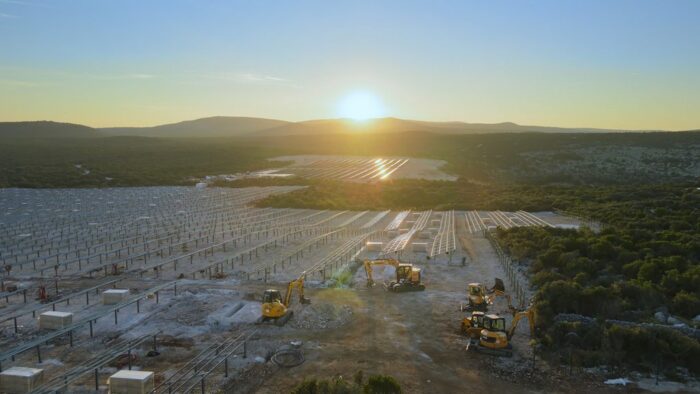Project planning gets a reality check after OBBB
Engineering consultant explains how the OBBB has already impacted solar project development —and what steps developers can take to adapt

By Mike Schutz | Renewable developers are facing a hard truth following the passage of the One Big Beautiful Bill Act (OBBB): federal policy is now putting a hard stop on the momentum built under the Inflation Reduction Act (IRA). The window is now narrow for projects to receive tax credits, and it’s already reshaping how teams are approaching development strategy and resourcing.
In the engineering consulting world, we’re seeing developers rethink their portfolios as a result—revaluating what moves forward, where they need to pump the brakes and what pivots entirely. Many are shifting toward early-stage development or standalone battery storage, which remains relatively unaffected by the bill. The common thread is a move away from all-in execution and toward measured decision-making.
Here’s a closer look at how the OBBB is reshaping development priorities and what steps developers can take to adapt.
Rebuilding backlogs, not breaking ground
For projects that can’t realistically meet the 2027 deadline, developers are focusing on early-stage progress. That means securing land, running environmental studies, completing survey work and maybe initiating preliminary engineering. It’s not speculative; it’s strategic preparation. These projects aren’t shelved; they’re just queued and being positioned for future activation.
Why? Because if the guidelines shift again, those projects will be among the few that are ready to go. Treating this time as a backlog-building opportunity is more practical than burning capital chasing tight timelines.
Quality vs. schedule
Some of the subtler risks of the OBBB is the temptation to reduce the scope or compromise design to meet the tightened schedule. With deadlines driving decision-making, it’s tempting to rush projects into construction with minimal due diligence.
The concern isn’t hypothetical. The renewable energy industry is still maturing, and that variability in experience can influence how thoroughly long-term risks are evaluated.
Design and construction shortcuts made to save time today can affect project economics for decades. And that tradeoff needs to be weighed carefully.
Why 2027 is closer than it looks
The typical constraints of renewable development haven’t gone anywhere. If anything, they’re more disruptive under the pressure of new deadlines. And the most difficult part? Much of the policy and guidance is still undefined. Because of that, there are a few areas that will impede progress.
Permitting | Federal permitting, particularly for wetlands, wildlife and coastal areas, remains a significant question mark. Agencies like the Army Corps of Engineers have offered limited clarity on how they’ll handle renewable projects post-OBBB. State and local processes remain active, but delays are growing. Early engagement remains the most effective way to manage risk. Developers that wait to involve jurisdictional experts often find themselves reacting to problems they could have planned for.
Procurement | The bill includes provisions that disincentivize the use of components from certain foreign entities. That’s raised costs and complexity for solar developers reliant on equipment manufactured in outside of the United States. Safe harboring has become more appealing, but its rules are still being clarified. It’s one more reason developers need to plan their procurement timelines in parallel with permitting, not after.
Interconnection | While developers work through ISOs and RTOs, final decisions rest with federal regulators—and post-OBBB, it’s not clear how that oversight will change. This ambiguity makes grid-tied solar especially vulnerable to delays. For now, most teams are monitoring the situation, but they’ll need to stay ready to pivot once implementation guidelines becomes more concrete.
Betting on BESS
Battery energy storage systems (BESS) are unaffected by the OBBB’s changes to federal tax incentives. As a result, we’re seeing increased activity around storage projects, especially from smaller developers who may not have the capital or appetite to push large-scale solar or hybrid projects under compressed timelines.
Storage also offers some logistical advantages: fewer permitting challenges, smaller footprints and, in many regions, clearer interconnection pathways. Interconnection queues and permitting complexity still exist for some storage projects, especially hybrids. But for now, BESS represents a more navigable option in a climate full of uncertainty. Developers looking to maintain momentum without overcommitting to longer timelines are seeing storage as a logical pivot.
A structured approach is the way forward
Given all this, developers are reevaluating their portfolios based on actual feasibility—not hope. Drawing from experience navigating policy-driven market shifts, a practical way to bring structure to that process is to group projects into three categories:
- Group A: Fully entitled projects with clear procurement paths for 2027—move these forward.
- Group B: Projects with potential permitting, procurement, or schedule risks—evaluate case by case.
- Group C: Projects unlikely to meet 2027 deadlines—maintain ownership but conserve capital.
The OBBB didn’t eliminate renewable energy development. But it did create uncertainty. Developers who respond with clearer prioritization, early technical planning and a realistic view of permitting and procurement constraints are the ones most likely to maintain momentum.
This isn’t about rushing or leaving projects to collect dust. It’s about ensuring every step has purpose.
Mike Schutz is Bowman’s director of renewables & power delivery, with a proven track record of driving growth in the energy sector. He focuses on identifying and securing new opportunities across the evolving clean energy landscape, particularly in battery storage, power delivery and renewables integration.




